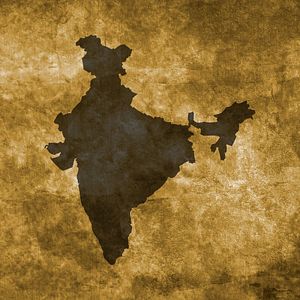Should the subcontinent be referred to South Asia or India, especially in the historical sense?
This was the subject of an intense debate that raged among scholars and activists in the U.S. state of California over whether the region should be referred to as “South Asia” or “India” in middle school textbooks. Also controversial was how the textbooks portrayed lower castes, minorities, and women.
Hindu groups believed that these traditionally disadvantaged groups were depicted in a way that overemphasized their degraded status and the role of Hinduism in their debasement. On the other hand, many academics and activist groups associated with the Dalits (formerly also known as “untouchables”) argued that while the social reality of pre-modern India was in fact complex, it would be disingenuous to deny a link between aspects of Hinduism and the caste system and the treatment of women.
Ultimately, in a decision last week, educators in California decided to keep mentions of the caste system in the textbooks, but met many of the demands of Hindu activist groups to portray the subtleties of the system. Although this seems to have resolved the matter for now, this is not the end of the issue on how caste and other socioeconomic aspects of ancient India and Hinduism ought to be portrayed; we will see much debate on this issue in India and Western expat and academic circles for decades before a consensus is reached.
California educators also ruled that the ancient subcontinent would continue to be referred to as “India,” instead of “South Asia.” Demands to change the historical description of the region from “ancient India” to “ancient South Asia” chiefly originated from people of Pakistani, Bangladeshi, and Nepali origin who did not want their countries of origin to be conflated with modern India by the use of such terminology.
But in making the decision to retain the word India, educators in California correctly followed a long historic tradition in the West, dating to Herodotus, to refer to the entire region as India, or by extension of Southeast Asia, as the Indies. Both Western and Muslim commentators traditionally held that India began at either the Indus River (mostly in today’s Pakistan) or the Hindu Kush Mountains (in today’s Afghanistan and Pakistan). Hindustan, the Persian term for the region, translates well as “India,” and in Muslim literature, such as the Baburnama, Hindustan began at the Khyber Pass (at the Afghan-Pakistan border today).
The decision to keep the term “India” met a key demand of most Indian-American and Hindu groups, though these groups were right for the wrong reason–as Pakistani and other groups suspected, many Hindu activists do indeed see their region’s past through a nationalistic lens, as a sort of greater India projected backward into the past. But this way of thinking is anachronistic. Modern India, as it comprises the largest part of the historical India and can claim to be the main successor state of British India has retained the name “India,” but the legacy of ancient and medieval India is also a part of Nepal and even Pakistan and Bangladesh, which can claim to be heirs to the medieval Indo-Islamic culture of the subcontinent.
If the European Union ever became a country named “Europe,” would that negate the use of the term “Europe” when referring historically to European states that remained outside of this new union? Therefore, the term “India” is something that ought to be embraced by other South Asian countries. In a strange way the Hindu right is correct, but not in the way they see it.
Yet the debate over whether to call the ancient subcontinent India or South Asia mostly revolves around pointless semantics. Ironically, the same sort of Hindu groups that so adamantly advocate for the continued use of the term “India” in U.S. textbooks are the ideological cousins of those in India who hate the name, given its Western origins, and would rather call both the modern country and the ancient civilization by its native name of Bharat. After all, nobody in ancient India called the region “India,” with terms like Aryavarta and Jambudvipa being the most commonly used in ancient literature.
While Hindu and right-wing Indian groups often do make some valid points–they should not be dismissed offhand–some elements of these groups are becoming increasingly rabid and incoherent in their quest to seize control and politicize debates on India’s history, leading to the sort of intellectual incoherence seen in this India-name debate and a variety of exceedingly strange theories, as I discussed in the third issue of The Diplomat magazine. There eventually needs to be some sort of dialectic between the intellectual demands of right-wing groups and academics; otherwise, two parallel versions of Indian history that have little in common with each other will continue to emerge.

































